Our top picks
Best Overall: Makalu I Light Sleeping Bag
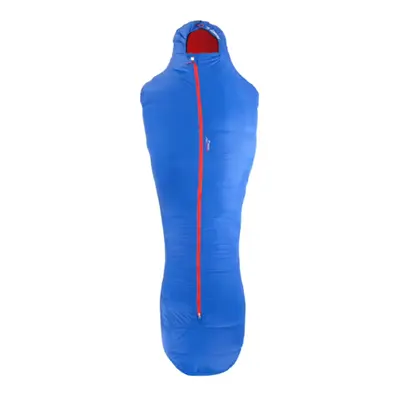
The bag comes in three different sizes, comfortably fitting anyone between 1.6 and 2 metres tall. It's also marketed as a “5-season” sleeping bag. And while we can't say that the bag is so good it creates another season, it can serve you well in just about any situation.
It doesn't leave the comfort zone even at -5 degrees and it stays rather decent up until -11 degrees. And if you were wondering, it can allow you to survive up to -31 degrees Celsius. Although we don't recommend testing that function out.
And this high level of warmth is all thanks to its hydrophobic down constriction, which also makes the bag itself incredibly comfortable. Plus, down bags like this are a lot more durable than cheaper down bags that tend to be damaged by rain.
So, if you were to get just one bag while wanting to camp out multiple times during the year, we think this bag is the way to go. Coupled with a good return policy, a strong brand, and lots of comfort – it was by far our favourite.
- Size: M, L, XL
- Hydrophobic: Yes
- Lowest safe temperature: -31 degrees
- Filling: Down
Advantages



Disadvantages


Best for Winter: Leviathan EV 900 Sleeping Bag
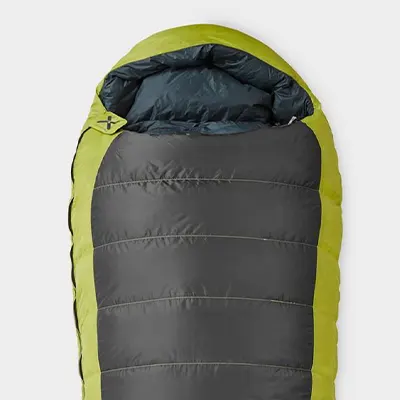
In terms of warmth, the Leviathan is arguably even more impressive than our last pick. With the ideal temperature being set at -9 degrees Celsius, this bag can get you through extremely harsh winters.
With 900gsm / 600 fill power duck down insulation, it's truly one of the warmest down bags you're going to find.
However, the bag is also very fluffy, which adds some much-needed comfort. And it has a neck baffle that will keep all the warm air inside the bag. But that's not all, as the bag also comes with a pillow pocket for added convenience, which isn't always the case with mummy sleeping bags.
Overall, it's an incredibly durable and comfy bag that's ideal if you want to go camping during the winter. However, do note that it's over 2 metres long, so if you're on the shorter side, either put extra padding in the lower half or try to find a smaller size.
- Size: 220 x 78cm
- Hydrophobic: Yes
- Lowest safe temperature: -16 degrees
- Filling: Duck down
Advantages


Disadvantages

Best for Summer: ARPENAZ 15°
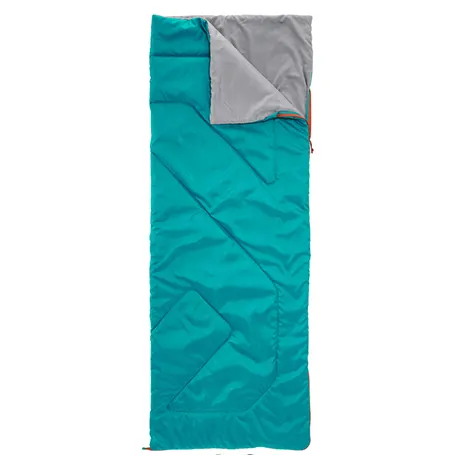
As the name suggests, the ARPENAZ 15° is best suited for temperatures around 15 degrees, focusing a little more on breathability than insulation. That being said, if you're a cold sleeper, you won't have to worry about getting chilly either.
It's a rectangular bag with a zipper that covers the entire side, meaning that getting in and out is incredibly easy. And while polyester isn't a premium material, the low price easily makes up for it.
Lastly, the sleeping bag is very light, easily competing with some higher-end backpacking sleeping bags in terms of portability. In fact, you'll barely even notice the stuff sack if you hang it on your backpack.
So, if you're going camping in the late spring or summer and don't want to break the bank – this is the ideal choice.
- Size: 190 x 72 cm
- Hydrophobic: N/A
- Lowest safe temperature: 8 degrees
- Filling: Polyester
Advantages



Disadvantages

Best 3-Season: The SWTMERRY Sleeping Bag
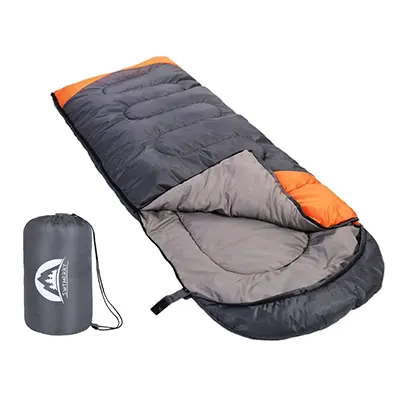
As you might have noticed, winter bags are usually Mummy bags, as this is the best way to preserve heat. And when it comes to summer bags, the rectangular shape is a lot more useful. But then this bag comes around and gives us the best of both worlds!
With a bag design that sticks pretty close to your body and has a hood, it can keep you warm during autumn. However, it also has a zip at the bottom, allowing you to put your feet out and cool off during the summer months. So, it has you covered in temperatures between 5 and 25 degrees Celsius.
And while you'd need to look into Double sleeping bags to be able to share the bag with a partner, this bag has something similar. Namely, you can unzip the sleeping bag and use it as a comforter instead!
- Size: Single
- Hydrophobic: N/A
- Lowest safe temperature: 5 degrees
- Filling: Hollow fibre
Advantages



Disadvantages


Best Budget: Eurohike Snooze 200 Sleeping Bag
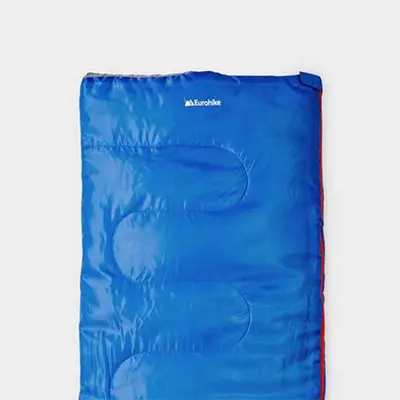
Coming in at a tenth of the price of the previous models, the Snooze sleeping bag keeps it cheap and simple. It's a 2-season sleeping bag that's amazing for camping out during summer and spring.
It's also a rectangular bag, meaning that you have more than enough room and toss and turn as you please. And you can even transform it into a comforter if the situation calls for it.
Plus, since it's relatively thin, it will hardly take up any space in your backpack. And even when compared to backpacking sleeping bags, it's more than affordable.
So, if you want a simple bag for when you go on your summer adventures, we think this is an excellent choice. The fact that it's also one of the cheapest models on the UK market is just a bonus!
- Size: 190 x 75cm
- Hydrophobic: N/A
- Lowest safe temperature: 2-season
- Filling: Polyester
Advantages



Disadvantages

Best Double: Basalt Double Sleeping Bag
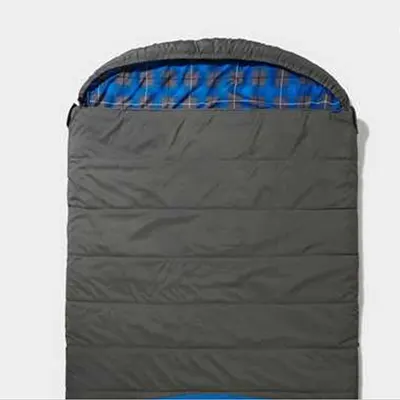
With a width of 1.5 metres, this sleeping bag easily fits two people. And since it's also 2.25 metres long, you'll have plenty of leg room during those spring or autumn nights. However, the bag also comes with a few features that make it ideal for couples.
For one, it has been specially treated to combat the formation of most kinds of odours. And if you're a hot sleeper, this should be music to your ears. Plus the bag can be easily unzipped from either side, meaning that you can come and go as you please.
You can even transform the sleeping bag into two duvets in case you want to wash it or snuggle during the day. The polyester filling is also rather soft and the addition of two inner pockets makes it easy to keep your valuables safe.
So, even though you can find cheaper synthetic bags, we'd say this one is worth the price. This is especially true if you only want to buy one camping sleeping bag and snuggle under the stars.
- Size: Douple
- Hydrophobic: N/A
- Lowest safe temperature: 2-season
- Filling: Polyester
Advantages



Disadvantages


Best for Kids: Highlander Kids Creature Sleeping Bag
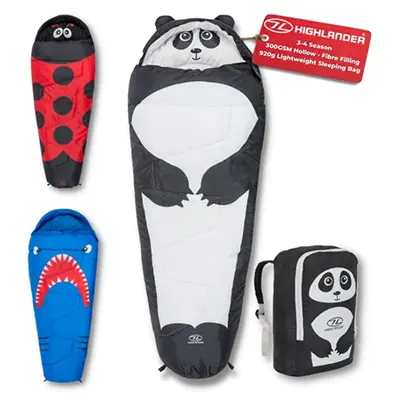
First off, let's just admire the design. While most kids sleeping bags are just the standard model but in blue or pink, this one actually tries to keep things fun.
You have 4 completely unique designs to choose from, with a turtle, panda, ladybug and shark look!
Plus, instead of the the usual boring stuff sack, these sleeping bags are like little backpacks that your kids can carry around. And while it's not exactly made for winter, a mummy style bag is still going to be relatively warm.
Mix all of this with a pretty warm filling and a sturdy design, and you get a sleeping bag most kids will simply adore!
- Size: Kids Single
- Hydrophobic: N/A
- Lowest safe temperature: 6 degrees
- Filling: Polyester
Advantages



Disadvantages


Best Comfort: Berghaus Indulge Sleeping Bag
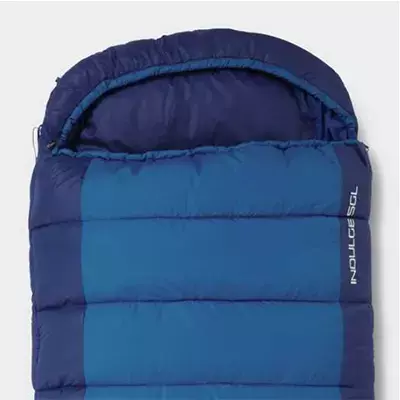
Unlike some of the other models featured so far, the Indulge sleeping bag puts all of its chips on comfort, making the bag incredibly soft and sleep-friendly. It comes with a pillow, an inner pocket, and a soft cotton flannel lining that's very nice to the touch.
It's also on the larger side, being 2.2m long and opts for the rectangular shape, meaning that you get some extra room. And while it's not intended for winter camping, it's still pretty warm – with a lower limit of -2 degrees Celsius.
So, it's one of the better three-season sleeping bags. And since it's pretty compact, it makes for a good car camping sleeping bag as well.
So, if you want to have a nice nap in the forest as opposed to toughing it out in the mountains, it's likely your best choice so far!
Advantages



Disadvantages

Best for Camping: SEA TO SUMMIT – Spark SpI
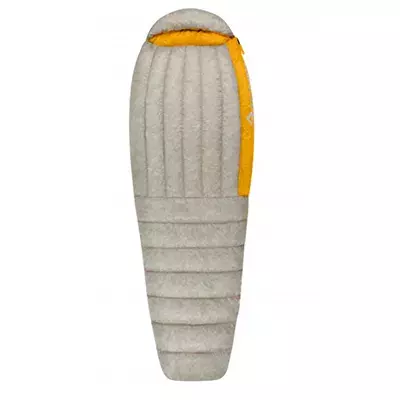
In the camping corner, weighing in at just 360 grams, we have the Spark SpI! Unlike a few of the models mentioned so far, this is a down bag, meaning that it's as fluffy as possible. And don't worry, the down has also been treated to withstand moisture.
And while the comfort rating for the bag is at 9 degrees, which is a bit high, it can theoretically keep you alive at negative degrees as well. So, while we wouldn't recommend using it during the winter, it does offer a decent temperature range overall.
But the biggest selling point is how lightweight it is. That, when paired with a down construction which can be compressed very well, leads to an amazing bag that barely takes up any room.
So, if you're looking for good backpacking sleeping bags that can handle slightly lower temperatures, this is likely your strongest choice!
- Size: Regular, long
- Hydrophobic: Yes
- Lowest safe temperature: -9 degrees
- Filling: Down
Advantages



Disadvantages


What to look for when buying the best sleeping bags

Although most sleeping bags might seem rather similar from the outside, there's a surprising amount of depth when it comes to their design. Therefore, if you want the best sleeping bag available, you're going to have to keep a few key factors in mind.
After all, a good backpacking sleeping bag might not be the best winter sleeping bag and vice-versa.
Of course, none of these rules is universal and there will always be some leeway. However, if you want to make an educated guess and get the best bang for your buck, here are the main things you should consider.
The material
We're going to start things off by talking about the two main sleeping bag materials – as this is the biggest differentiator. Generally speaking, we have two types in this category – synthetic sleeping bags and down sleeping bags. So, let's go over each type and discuss what makes it better than the alternative.
Should you get a synthetic sleeping bag?
So, what are the main selling points for synthetic sleeping bags? First off, the price. All the sleeping bags we've featured vary in price but as a general trend, synthetic sleeping bags tend to be significantly cheaper than their down counterparts.
So, if you're looking for a budget sleeping bag, a synthetic sleeping bag is probably going to be your best bet. This is especially true if you plan on getting more than one. For example, if you're planning a family camping trip.
Secondly, synthetic sleeping bags tend to handle moisture a lot better than down sleeping bags. This is because down unless specifically treated, can get lumpy when wet and lose most of its insulating properties. A synthetic bag on the other hand doesn't have such issues and remains relatively warm regardless of whether it's a bit wet or not.
As we'll discuss in the following section, this isn't always the case, but generally, synthetic bags are a lot better if you're expecting rain or have to cross some surface of water. All of that being said, getting a down sleeping bag also comes with some rather amazing perks.
Should you get a down sleeping bag?
The first major selling point of down sleeping bags we'd like to discuss is how compact they typically are. In terms of compression, they tend to outperform synthetic sleeping bags quite a bit, oftentimes fitting into a small backpack with room left over. And this is because they're generally also a lot smaller and lighter, easily fitting in any stuff sack.
So, in terms of backpacking sleeping bags, down models are usually the best choice. After all, a lightweight sleeping bag is almost always more preferable to a bulky one. And the stuff sack they come with is incredibly small and even a regular-sized backpack can fit it and plenty of others items as well.
On top of that, down sleeping bags don't necessarily have to lose their value in rainy weather either. If you know where to look, you can find down models that have been hydrophobically treated. However, do note that these models do add a few more pounds to the original price.
So, if you want a warm bag that you can easily carry around and don't care much about the price, a down sleeping bag is for you. However, if you want a budget-friendly option that doesn't mind getting wet, a synthetic sleeping bag should be more your speed.
Type
Although most people don't even realise it, there are actually different sleeping bags with different designs on the market. So, let's go over the most prominent ones and see whether they'd be the ideal type for you.
Also, do note that it's a bit difficult to exactly categorise the main types of sleeping bags. So, we're going off of what makes the most sense to us, however, other sites might use different categories.
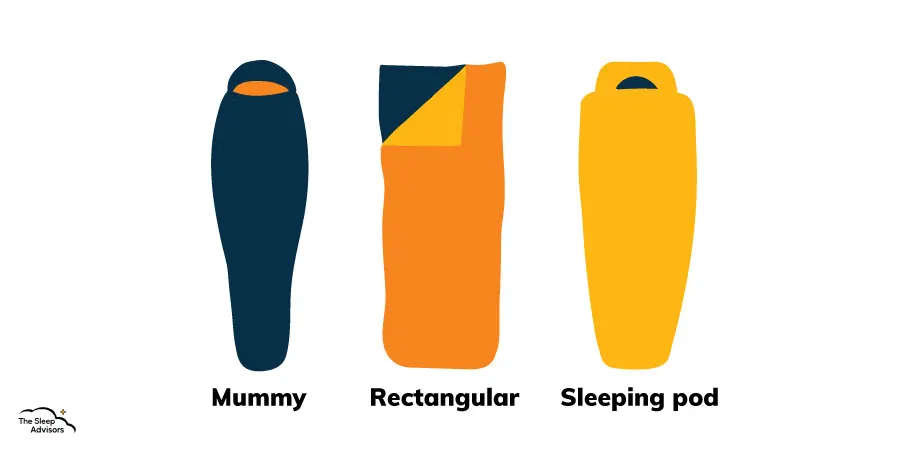
Mummy sleeping bags
A Mummy bag is the most popular and widespread sleeping bag type. As the name suggests, it resembles a mummy with a shape that's narrower around the head and the feet. And for most people, Mummy bags will get the job done.
That being said, there are a few categories where a Mummy style bag might be slightly less than ideal. Most notably, if you like moving your feet at night. After all, Mummy bags leave very little room in the bottom half, meaning that you have to stay more-or-less in place the entire night.
And the same case could be made about moving your head, however, Mummy bags aren't that constrictive in the upper half, so it shouldn't be too much of an issue. Plus, keeping things narrow and tight also means that less hot air is getting out. So, if it's very cold, this negative actually becomes a perk.
Rectangular sleeping bags
A rectangular bag is basically the opposite of a Mummy bag. It keeps things loose and allows you to move around as much as you'd like. They typically also feature dual zippers, meaning that you can snuggle the upper half as if it were a duvet.
And on a similar note, the bag itself can even be used as a comforter. This can be pretty useful for car camping and generally gives the sleeping bag a dual function, which is always a good benefit to have. That being said, they retain a lot less feat since there are plenty of gaps.
Overall, rectangular bags are really good for camping in the summer or spring. They allow for a lot more ventilation than other sleeping bags and they generally focus more on comfort. However, we wouldn't recommend them once it starts getting really cold.
Sleeping pods
Sleeping pods are somewhere in the middle of the previous two. At first glance, they look like Mummy bags, as they have rounded edges and a similar shape. However, upon closer inspection, you might see that they also share one key feature with rectangular sleeping bags.
Namely, they have a lot more space and aren't nearly as constrictive. So, if you toss and turn in the night or simply don't like feeling like you can't move – they're a good choice. And since they are a bit narrower around the top than rectangular bags, the heat loss isn't as dramatic.
So, if Mummy bags make you feel anxious but you'd still like to keep in as much warmth as possible, getting a sleeping pod might be your best bet.
The size
Getting an appropriately-sized sleeping bag is a lot easier than picking out the correct type but it's arguably just as important. After all, even a Mummy sleeping bag can't keep you warm if there's a lot of extra room. And in terms of general size, there are three major types.
The standard sleeping bag
As the name implies, a standard-sized sleeping bag is going to fit most adults. They are also sometimes labelled as “for men” or “for women” but this isn't too important of a factor. The only difference between the two is that men's sleeping bags are typically a bit wider in the upper half to accommodate broader shoulders.
And the women's sleeping bag sometimes has more space around the hips. But as we've said, it's not a very noticeable difference. In fact, it sometimes only relates to the colour of the sleeping bag – which has no effect on its quality.
However, a measurement you should keep a close eye on is the length of the bag. If you're taller than the average person, you want to find a longer sleeping bag that can accommodate your entire body and not have your chest sticking out. On the other hand, if you're shorter than the average person, take that into consideration as well. This is because the extra room in the bottom area will slightly lower how warm the bag can keep your feet.
A double sleeping bag
Double sleeping bags are noticeably larger than their standard version. In general, they can be useful in two cases – if you plan on sharing the bag or if you want plenty of wiggle room. But as we've mentioned multiple times so far, be cautious about getting a bigger sleeping bag if you plan to sleep out during the winter.
A double sleeping bag can also be useful if you're of a significantly larger build. This is especially true with Mummy bags, as they can feel too constrictive if you have very broad shoulders.
A kids' sleeping bag
Lastly, this one needs the shortest explanation. Just like with adults, kids' sleeping bags need to be the appropriate size in order to provide adequate insulation. So, getting a separate bag for your youngsters is highly advised – especially during the colder part of the year. Aside from that, there are no significant differences between kids' bags and standard bags.
The temperature ratings
Just like with the TOG scale for duvets, sleeping bags come with a tag that shows which temperatures they can be used in. This is also sometimes abbreviated according to what part of the year the bag can be used. For example, a four-season bag can be used during winter and summer while a one-season bag is likely designed either to only withstand heat or the cold.
That being said, looking at the actual temperature rating is a must. And you can expect it to show up in two different forms. Sometimes manufacturers will only print out the lowest temperature their sleeping bag can be used in. Do note however that this tag usually means that you can survive during said temperature, and not necessarily that you'll be comfortable.
However, some bags also come with a temperature range. These tags are a lot more transparent and break down what you should expect at any given temperature point. So, we generally advise getting a bag with this type of breakdown, especially if you're going to sleep in colder climates.
Where will you mostly camp out?
Lastly, we'd like you to consider exactly where you'll be camping most of the time. This is because different situations might call for different sleeping bags. And as you've seen by now, it's a deceptively diverse category.
So, for example, if you need a car camping sleeping bag, you can probably focus on comfort. After all, a car immediately insures a certain level of protection, so, picking out a model that's just nice to sleep in is all you need to do. However, if you're planning on sleeping out in the woods, you'll also need outdoor gear to make things run smoothly.
Things like a sleeping pad, a tent, a fire starter kit, etc. So, in these cases, you have to account for the cold. This means that you need a sleeping bag stuffed with good insulation. But if you'll also be moving around a lot, you also want something that's lightweight. So, you have to balance out the fill power of the sleeping bag and how well it compresses.
These were just a few examples but hopefully, it gets across the fact that some thought needs to be put in. And not just when it comes to sleeping bags. We recently made a similar guide for hammocks and even that needed proper planning. So, be prepared and determine what you need before committing to a purchase.
Tips for buying and using the best sleeping bags

Now that you know all of the factors you need to consider when getting a sleeping bag, we wouldn't blame you for feeling overwhelmed. So, we're going to break it all down into a few key tips that you can easily follow.
Determine where you want to go – of course, you're free to go wherever and whenever you want. However, it helps knowing if generally, you're more likely to sleep in a small forest during the summer or go to the middle of nowhere in winter.
Choose a price range – depending on how you answered the previous question, you should choose whether you want the highest-quality down bag or a simple, effective, and budget-friendly synthetic bag.
Get all the measurements down – make sure the bag has a strong enough fill power and suits your body and your sleeping habits.
And that's all you realistically need to know in order to get started. Of course, if you want the absolute best sleeping bag that suits your every need, it takes a bit more consideration. But if you just want to buy a bag and go camping without thinking about it too much, these three steps should lead you in the right direction.
The advantages of owning the best sleeping bags
After all of these steps, tips, and questions – you might wonder whether there's really such a big difference between different sleeping bags. After all, we're sure you all know that one person who bought a sleeping bag on a whim and has never complained about it.
And in truth, you can find a versatile sleeping bag that ticks most of the boxes. However, we think that getting the absolute best sleeping bag is something that requires a bit of thought. And getting one is going to potentially net you the following advantages.
Staying warm
The most important factor when it comes to getting a good sleeping bag is staying warm. Since you'll be sleeping on the ground, the temperature is going to be quite low and even if you use a sleeping pad, you need a warmer bag. After all, even during the summer months, temperatures can drop quite a bit during the night.
So, getting a bag that has good fill power, doesn't let warm air escape through the top, and generally keeps you cosy is very important. And as we've said, not every sleeping bag can or will do this for you, as they can differ in build and even in terms of the temperature rating label.
Making travel a lot easier
Getting the best sleeping bag doesn't mean just getting a warm bag but also a bag that you can easily carry around. This is especially important if you plan to go backpacking and are only carrying limited supplies.
And two bags can have the same temperature ratings but one is twice the size of the other. So, if you have limited space in your backpack, getting a bag with a good warmth-to-weight ratio is rather important. Plus, once you get into high-end sleeping bags, you'll see that even the lightest sleeping bags can have really good insulation.
Staying comfortable
On the hand, if you're planning on sleeping during the summer and are going to take your car, comfort is king. So, finding a double bag that's soft to the touch and accommodates your sleeping style can be your number one priority.
Nevertheless, a model that's a cosy sleeping bag for one person might be insufferable for another. So, finding the model that best suits you can allow you to get a good night's sleep and have a pleasant adventure.
Added security
Lastly, let's talk about security. While standard sleeping bags aren't too expensive, higher-end models can cost a pretty penny. So, finding good sleeping bag brands can be worth your while. After all, they often have guarantees in place so you don't have to constantly worry about whether it will be the wrong size once it's delivered.
Plus, the bigger the brand, the more versatile its collection can be. So, you might find the perfect three-season sleeping bag or a special model that accommodates very tall people. We're not saying that you have to go for the priciest sleeping bag but finding a good, trusted brand can definitely make you feel more secure in the long run.
Spread the word
FAQs about the best sleeping bags
Lastly, let's go over some of the FAQs you might have about finding your perfect sleeping bag!
There are two major sleeping bag types – synthetic and down sleeping bags. Synthetic models are usually cheaper but down models are much more compact.
A Mummy sleeping bag is among the most popular sleeping bag designs. It's defined by its narrowing at the feet and typically has a hood.
Synthetic models can usually be washed. However, if you have an untreated down bag, you mustn't get it wet.


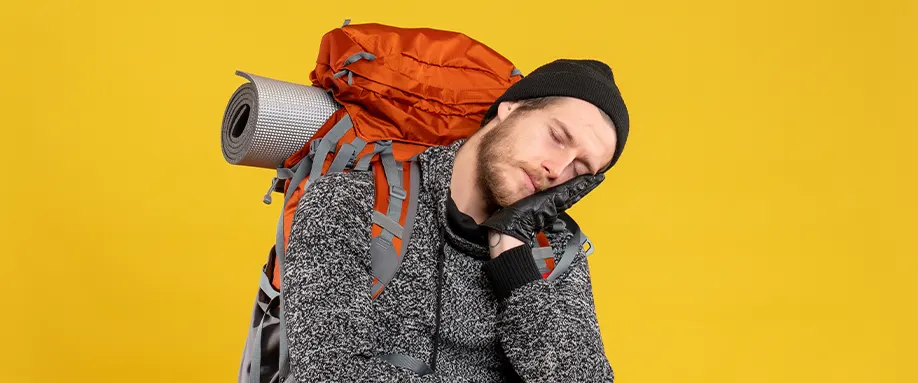


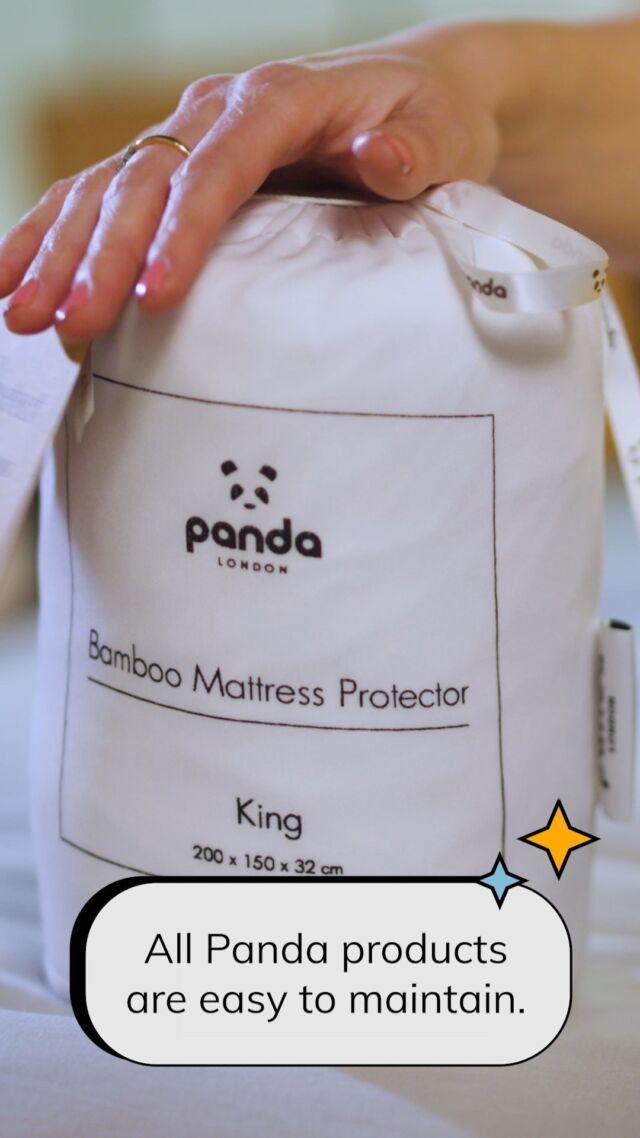

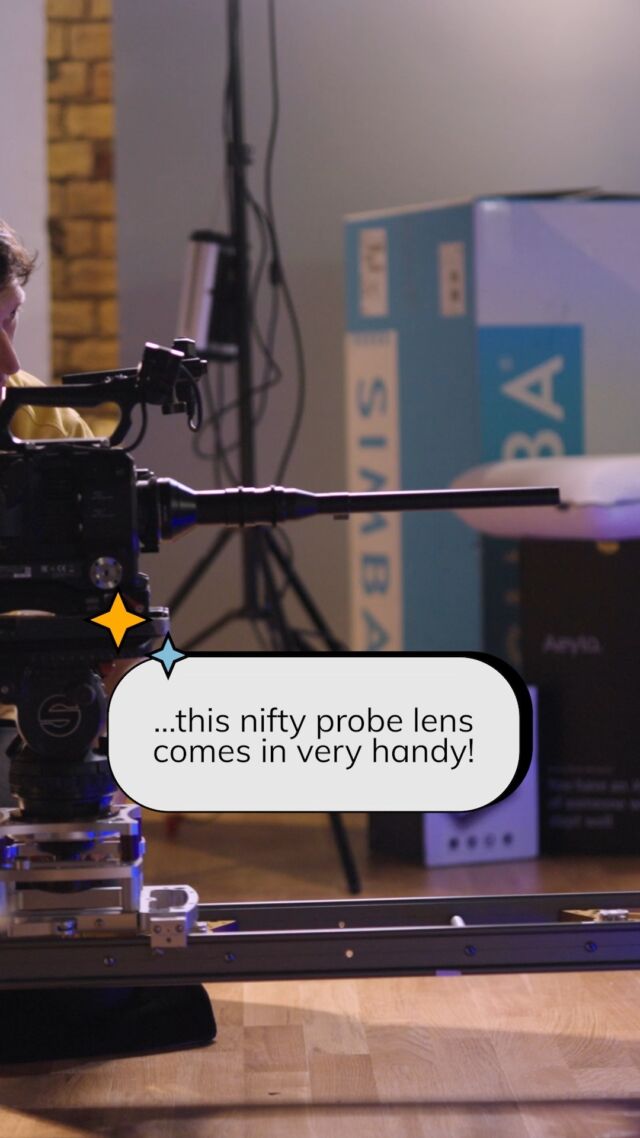








There are no comments yet
"*" indicates required fields